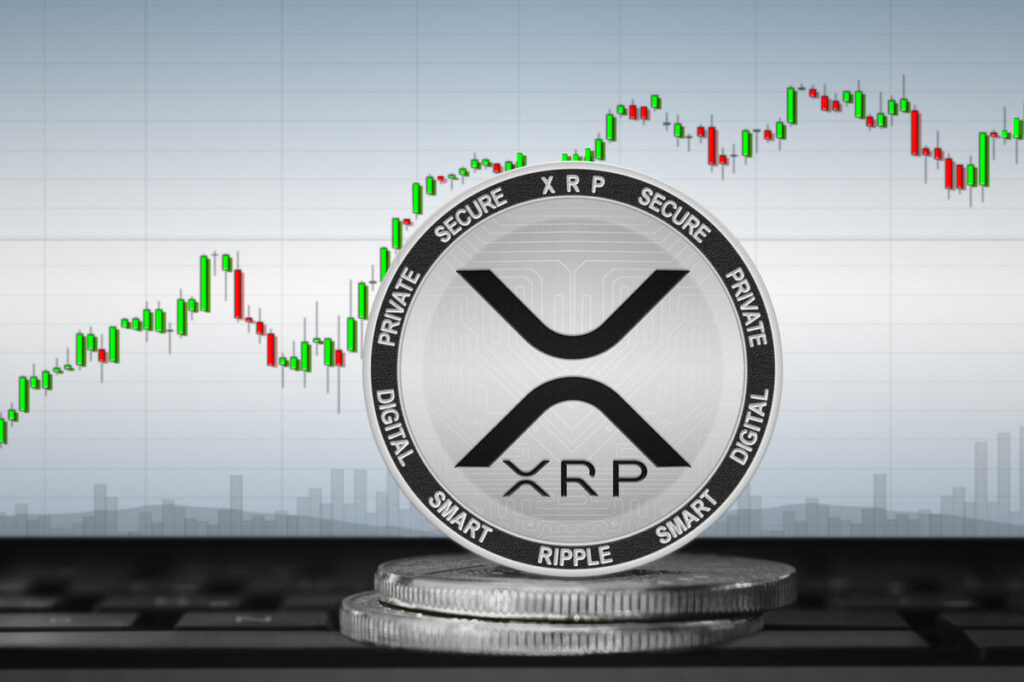The US government is open to considering unconventional financial strategies as cryptocurrency gains further legitimacy at the highest levels of power. Bo Hines, head of Trump’s Presidential Council of Advisers for Digital Assets, recently suggested that the administration is willing to explore the idea of swapping some of the nation’s gold reserves at Fort Knox for Bitcoin — provided it remains budget-neutral.
Hines Open to Exploring New Avenues
In a FOX Business interview, Hines emphasized the openness of the current administration to fresh ideas.
“If it’s budget neutral and doesn’t cost a taxpayer a dime, you’re kind of exchanging one for the other,” he said, when asked about the possibility of trading US gold reserves for Bitcoin.
While nothing is set in stone, Hines stressed that the working group is in an exploratory phase. Rather than pushing a fixed plan, the Council aims to hear diverse perspectives and consider a wide range of “creative ideas.”
Expanding the Crypto Ecosystem
Hines also addressed the scope of crypto assets being considered by the administration. While President Trump previously mentioned Ethereum, XRP, Solana, and Cardano in his national crypto reserve announcement, Hines made it clear that the administration is not limiting itself to these four.
“These were highlighted because of their market cap dominance,” he said, echoing earlier remarks by entrepreneur David Sacks. But innovation across various blockchains remains a priority.
Lummis Pushes for Bitcoin Reserve Strategy
Senator Cynthia Lummis has long been an advocate for integrating Bitcoin into the national asset portfolio. Her earlier proposal, the BITCOIN Act, called for acquiring 1 million Bitcoin — around 5% of the current supply — by selling off Federal Reserve gold certificates.
“We already have the financial assets in the form of gold certificates to convert to Bitcoin,” Lummis said in a Bloomberg interview last year. “So the effect on the US balance sheet is pretty neutral.”
Although her 2023–24 proposal stalled in Congress, Lummis recently reintroduced a new version of the bill (S.954) at a crypto policy conference. The goal remains the same: transform a portion of America’s traditional gold holdings into a modern Bitcoin reserve.
An Unconventional but Growing Movement
While far from mainstream, the concept of a national Bitcoin reserve is slowly gaining traction among some US lawmakers and advisers. The idea of selling off legacy assets like gold to invest in digital currencies reflects a broader push for modernization in financial policy.
The debate over whether Bitcoin can or should become part of America’s official reserves is far from settled, but one thing is clear — it’s no longer being dismissed outright.
Michael Saylor’s Strategy is continuing its bold foray into the cryptocurrency world with a major financial move designed to ramp up its Bitcoin accumulation. On Friday, the firm revealed it expects to raise approximately $711 million in net proceeds from a newly launched preferred stock offering.
An Expanded Offering Amid Surging Demand
The offering, labeled as “Series A Perpetual Strife Preferred Stock” (STRF), has been expanded from an initial 5 million to 8.5 million shares due to overwhelming demand. Each share is priced at $85, with a cumulative fixed dividend rate of 10% annually, based on a stated amount of $100 per share.
Several major financial institutions are involved in the offering. Morgan Stanley, Barclays Capital, Citigroup Global Markets, and Moelis & Company are acting as joint book-running managers. AmeriVet Securities, Bancroft Capital, BTIG, and The Benchmark Company are onboard as co-managers.
Flexible Redemption Rights and Liquidity Provisions
The stock comes with a $100 liquidation preference per share. This value is recalculated daily, factoring in market activity and other financial indicators. Strategy retains redemption rights for the shares, which can be exercised if the outstanding share count drops below 25% of the original issue or in certain tax-related scenarios. Additionally, holders can demand repurchase if a significant structural change affects the firm.
The 21/21 Plan: Strategy’s Bold Bitcoin Vision
This offering is a critical element in Strategy’s ambitious “21/21” plan, which aims to raise $42 billion—split evenly between equity and debt—over three years to aggressively expand its Bitcoin reserves. The plan was first introduced in Strategy’s Q3 2024 earnings report and is already halfway to its funding goal.
Since October 2024, Strategy has steadily grown its Bitcoin portfolio, now holding an impressive 246,000 BTC. The Tysons, Virginia-based company has raised billions through convertible senior notes and similar financial instruments, and now holds nearly 2.4% of the total Bitcoin supply.
This latest financial maneuver further cements Strategy’s position as one of the world’s largest corporate holders of Bitcoin and underscores its unwavering belief in the asset’s long-term value.
Ripple CEO Brad Garlinghouse has confirmed that multiple XRP-based exchange-traded funds (ETFs) are set to debut in the United States in the second half of 2025. This follows the conclusion of Ripple’s long-standing legal battle with the U.S. Securities and Exchange Commission (SEC), which had previously cast uncertainty over the cryptocurrency’s future in the regulatory landscape.
Ripple CEO Confident in XRP ETF Approval
In a recent interview with Bloomberg Crypto, Garlinghouse expressed strong confidence in the approval of XRP ETFs. When asked about the possibility of XRP being considered part of a government-backed reserve and the likelihood of ETF approval, he stated, “I have immense confidence on the ETF.”
Currently, several XRP ETF applications, including spot, leveraged, and inverse variations, are under review by the SEC. Among the notable issuers is Franklin Templeton, one of the largest asset managers, which recently entered the race for XRP-based ETFs.
Garlinghouse remained optimistic about their launch, stating, “I think those will be live in the second half of this year.”
XRP ETFs See Growing Interest Globally
While the U.S. market awaits regulatory clearance, Garlinghouse highlighted that XRP-based exchange-traded products (ETPs) in international markets have already witnessed substantial investor inflows. This trend stands in contrast to outflows seen in other cryptocurrency ETFs.
“I think that’s because you had this false negative pressure from the SEC, this kind of an exogenous hand holding things down that’s now being released,” he explained.
SEC Ruling Boosts XRP Market Confidence
The resolution of the SEC’s lawsuit against Ripple sparked a significant surge in the XRP market. On prediction platform Polymarket, the odds of an XRP ETF receiving approval by 2025 soared to 86%. Meanwhile, XRP’s value experienced a notable uptick of 14%, reaching a high of $2.57, as per CoinGecko data.
US Government’s Crypto Stockpile Plans
Garlinghouse also addressed the U.S. government’s approach to digital asset reserves. He revealed that seized cryptocurrencies, including XRP, would be incorporated into a national crypto stockpile alongside a strategic Bitcoin reserve.
“My understanding is that the stockpile will be represented by seized other cryptos other than Bitcoin that then will be in that stockpile,” he stated.
He further clarified that cryptocurrencies seized by law enforcement, including XRP, would be added to the reserve alongside Bitcoin holdings.
Under a recent executive order signed by President Trump on March 6, all federal agencies are required to report their digital asset holdings to the Secretary of the Treasury and the President’s Working Group on Digital Asset Markets. Additionally, the order mandates an audit of previously seized cryptocurrency holdings, which have never undergone a full evaluation.
The executive order specifies that assets within the U.S. Digital Asset Stockpile can be sold under certain conditions, particularly with the authorization of the Treasury Secretary. While Trump had initially indicated that Ethereum, XRP, Solana, and Cardano would be included in the national stockpile, White House AI and crypto czar David Sacks later clarified that these assets were mentioned primarily due to their significant market capitalization.
Key Takeaways
- Cryptocurrency combines technology and finance, offering decentralisation, security, and opportunities for financial empowerment.
- Blockchain underpins cryptocurrencies, ensuring transparency, immutability, and trust while enabling real-world applications beyond finance, such as supply chain and healthcare.
- Cryptocurrencies present innovative investment options but come with volatility and risks that require thorough research and regulation.
- Decentralised finance (DeFi) and non-fungible tokens (NFTs) showcase new financial models and ownership concepts, driving global accessibility and innovation.
- Challenges such as scalability, environmental concerns, and cybersecurity threats test the resilience of the crypto space, prompting ongoing innovation.
- Mainstream adoption of cryptocurrencies is growing, with institutional investments and regulatory frameworks shaping a promising future for global finance.
I’ve always been fascinated by how technology reshapes the way we live, and nowhere is this more evident than in the world of finance. Cryptocurrency has emerged as a powerful blend of innovation and opportunity, transforming how we think about money, investments, and even the global economy. It’s incredible to see how blockchain technology underpins this revolution with transparency and security at its core.
For me, diving into the crypto space feels like stepping into the future. It’s not just about digital currencies but the endless possibilities they unlock—from decentralised finance to smart contracts. This intersection of technology and finance offers a glimpse into a world where traditional barriers are broken, and financial systems become more accessible and efficient. Exploring this dynamic space is both exciting and empowering, and I can’t wait to share more insights about its potential.
Understanding the Basics of Cryptocurrency
Cryptocurrency has revolutionised finance, blending technology with money. It offers exciting opportunities for innovation and investment.
What Is Cryptocurrency?
Cryptocurrency is a digital form of money. It operates on a decentralised network, using blockchain to secure transactions. Unlike traditional currency, it’s not controlled by governments or financial institutions. Popular examples include Bitcoin, Ethereum, and Litecoin. I find it fascinating because of its independence and potential to empower individuals globally.
How Cryptocurrency Works
Cryptocurrency relies on blockchain technology. Each transaction is recorded on a distributed ledger shared across multiple computers. Miners validate these transactions by solving complex problems, earning rewards. Once verified, transactions become immutable. This process ensures security and transparency. When I first learned about this, I was amazed by the integrity of the system.
Key Benefits of Cryptocurrency
Cryptocurrency offers multiple benefits. It enables fast, low-cost transactions worldwide, revolutionising cross-border payments. Its decentralised nature fosters financial inclusion, allowing unbanked populations to participate in the economy. I see it as a way to democratise finance, creating opportunities for millions.
Analysing the Role of Blockchain Technology
The Foundation of Blockchain in Cryptocurrencies
Blockchain serves as the backbone of cryptocurrencies, ensuring decentralisation and trust. It uses a distributed ledger to store data across multiple computers, eliminating centralised control. Each transaction is grouped into blocks and linked using cryptography, forming an immutable chain.
The consensus mechanisms, like Proof of Work (PoW) and Proof of Stake (PoS), validate transactions and add them to the blockchain. Miners or validators perform this process, ensuring accuracy without relying on middlemen. I’m fascinated by its ability to deter tampering and secure digital assets.
How Blockchain Enhances Security and Transparency
Blockchain uses encryption and consensus to safeguard transactions. Once data is added to the blockchain, it cannot be altered, protecting against fraud. This immutability fosters trust, especially in financial systems where accuracy and reliability are critical.
Transparency comes from the public ledger, which allows anyone to verify transactions. I find this openness revolutionary, as it holds network participants accountable. For example, Ethereum’s blockchain transparently tracks smart contract executions to ensure fairness.
Real-World Uses of Blockchain Beyond Cryptocurrency
Blockchain’s applications go beyond crypto and finance. For instance, it’s transforming supply chains by offering end-to-end traceability. A great example is IBM Food Trust, which helps document a product’s journey from farm to table, ensuring quality and safety.
It’s also improving data management in industries like healthcare, where secure patient record sharing is crucial. I’ve read about its potential in voting systems too, enabling tamper-proof elections. This versatility shows blockchain’s growing impact across sectors.
Exploring the Financial Implications
Cryptocurrencies as Investment Opportunities
Cryptocurrencies offer exciting investment possibilities due to their high growth potential. I’ve trusted Bitcoin and Ethereum for direct investments, and they remain my top picks. Many experts, like Michael Saylor, highlight these assets’ ability to hedge against inflation. Indirect options, like ETFs or futures, help diversify portfolios further.
The Volatility and Risks of Cryptocurrencies
Price swings make cryptocurrencies thrilling yet risky. Bitcoin’s 2021 rise to $69,000 followed by a significant dip tested my patience. Volatility can erode gains, but proper analysis mitigates risks. I often refer to the SEC for updates, which helps me keep my investments secure.
Impact on Traditional Financial Systems
Cryptocurrencies challenge traditional banks by promoting decentralisation. Transactions I make through blockchain are faster than using banks. Prominent economists believe this shift could democratise finance even more. It’s exciting to witness how digital assets rise above conventional models.
Assessing the Role of Regulation in the Crypto Space
Regulation in the crypto world bridges technology and finance by addressing challenges and ensuring a safe environment for participants.
Why Regulation Is Crucial in Cryptocurrency
Regulation ensures transparency and protects investors. It helps establish trust in crypto markets by requiring disclosures and enforcing compliance. This mitigates risks linked to scams and unpredictable price shifts, offering peace of mind. For example, MiCA promotes safer practices for EU traders.
Regulated frameworks significantly deter illicit activities. Money laundering and terrorism funding are major concerns in crypto. Policies like Brazil’s Cryptoassets Act are critical as they integrate anti-money laundering measures. These steps highlight how regulation fights financial crime in this dynamic industry.
Global Approaches to Cryptocurrency Regulation
Countries are adopting unique regulatory strategies. The US focuses on securing investors and monitoring crypto exchanges through the SEC. Meanwhile, the EU’s MiCA framework sets clear rules for transparency and consumer rights, while Japan mandates strict licensing for digital asset businesses.
Collaborative efforts are growing. Nations are exploring unified crypto standards to prevent regulatory arbitrage. Cross-border guidelines can enhance oversight and strengthen security measures globally. I find this collaboration among diverse countries as a step towards a stable crypto ecosystem.
The Future of Crypto Regulations
Future regulations might adapt to new tech advancements. Governments could introduce AI-powered tools for tracking illegal transactions. As crypto evolves, I expect regulatory bodies to align frameworks with innovations, fostering security while allowing room for technological growth.
Balanced regulation could ensure a thriving industry. Striking a balance where innovation meets regulation will be key. Future standards may enhance trust, encouraging institutional adoption. This could amplify immense financial inclusion globally, something I’m optimistic about in the evolving crypto space.
Investigating Emerging Trends in Crypto Technology
Blockchain and crypto technologies are changing how finance and technology intersect. As these innovations evolve, they unlock new opportunities and broaden access to digital financial tools.
Decentralised Finance (DeFi) Revolution
DeFi is transforming finance by cutting out traditional intermediaries like banks. I’m amazed by how DeFi platforms enable global access with just an internet connection. Users can lend, borrow, and invest directly with low fees. Negotiating interest rates is also a game-changer. According to industry experts, such accessibility fosters financial inclusion, particularly in underserved areas.
The Rise of Non-Fungible Tokens (NFTs)
NFTs are reshaping ownership in the digital space. These unique tokens revolutionise art, music, and virtual goods. I’ve seen creators monetise their work directly on platforms like OpenSea. Art auctions for digital pieces often reach six-figure sums. NFTs ensure ownership proof through blockchain — a concept I find exciting. Experts predict growing applications in industries like gaming and real estate.
Integration of Artificial Intelligence with Blockchain
AI is enhancing blockchain by improving analytics and security. I’m intrigued by how machine learning models optimise transaction processes in DeFi systems. Fraud detection using AI within crypto platforms is already making strides. Combining AI with decentralised ledgers boosts efficiency. Analysts foresee AI-driven smart contracts becoming standard.
Evaluating the Challenges Facing Cryptocurrency
Cryptocurrency’s rapid growth presents opportunities but comes with hurdles. I find these challenges fascinating as they test the resilience and ingenuity of those driving innovation in the crypto space.
Scalability Issues in Cryptocurrency Networks
Scalability remains a critical challenge for cryptocurrencies. Bitcoin processes only 7 to 10 transactions per second, while systems like Visa can handle thousands. The blockchain trilemma complicates this, as improving scalability often risks decentralisation or security. Ethereum’s transition to Proof of Stake showcases potential solutions but isn’t flawless. I’m optimistic that Layer 2 solutions like Polygon and sharding will unlock broader adoption without compromising blockchain integrity.
Environmental Concerns Related to Crypto Mining
Crypto mining has significant environmental impacts. Traditional Proof of Work systems consume vast energy; Bitcoin alone uses as much annually as some countries. I experienced this concern firsthand when reading about Iceland, where miners consume more energy than homes. Experts like Chris Bendiksen suggest renewables could bridge the gap. I’m encouraged by Ethereum’s shift to Proof of Stake and emerging eco-friendly consensus models tackling sustainability directly.
Addressing Cybersecurity Threats
Cybersecurity challenges threaten crypto’s trust. Hacks like the $600M Ronin Network breach expose vulnerabilities. I’ve seen blockchain’s transparency as a double-edged sword—accessible data invites attackers. Cryptographic safeguards mitigate risks, but constant vigilance is essential. Blockchain expert Andreas Antonopoulos emphasises security through smart contract auditing. I believe robust measures like multi-signature wallets and encrypted platforms strengthen user confidence.
Envisioning the Future of Crypto and Finance
Cryptocurrencies are reshaping global finance, combining innovation with decentralised technology. I’ve seen growing excitement around this space, driven by real-world applications and increasing adoption.
Mainstream Adoption of Cryptocurrencies
Cryptocurrency ownership is reaching record highs. In 2024, 40% of American adults own cryptocurrencies—up from 30% in 2023—with 63% looking to expand their assets. Institutional players like BlackRock and Goldman Sachs are investing heavily, seeking to legitimise crypto. This aligns with my growing confidence that crypto is becoming a staple in finance.
Potential for New Financial Models
Decentralisation is fuelling innovative models that challenge traditional systems. I’ve explored decentralised finance (DeFi) platforms where users lend, borrow, and trade directly without intermediaries. These models reduce costs and increase efficiency, showcasing crypto’s potential to democratise global finance.
Predictions for the Next Decades
I anticipate mainstream integration of crypto into global economies. Institutional crypto investments might surpass $500 billion by 2025, per estimates. Emerging trends like blockchain-backed AI and legal frameworks will likely stabilise this space. Future possibilities excite me, from scalable solutions to greener technologies.
Conclusion
The intersection of technology and finance through cryptocurrency is a fascinating journey that’s reshaping global systems. With blockchain driving transparency, security, and innovation, we’re witnessing a shift towards decentralised, inclusive financial models.
While challenges like scalability, regulation, and environmental concerns remain, ongoing advancements and collaboration inspire confidence in the future of this dynamic space. The potential for cryptocurrencies to democratise finance and unlock new opportunities is truly remarkable.
As adoption grows and technology evolves, I believe we’re only scratching the surface of what’s possible. The fusion of crypto, blockchain, and emerging technologies like AI promises an exciting future for both finance and technology.
Key Takeaways
- Cryptocurrencies are decentralised digital assets, offering financial independence by removing intermediaries like banks.
- Blockchain technology ensures secure and transparent transactions, providing a foundation for trust and innovation in the crypto world.
- Beginners should focus on well-known cryptocurrencies like Bitcoin and Ethereum, while understanding the importance of market volatility and diversification.
- Securing digital wallets and safeguarding private keys are crucial to protect assets; leveraging 2FA and hardware wallets can enhance safety.
- Beyond investment, cryptocurrencies offer practical uses, from everyday transactions to participating in DeFi platforms and NFTs.
- Staying vigilant about scams and prioritising secure platforms and practices is essential to navigate the crypto space confidently.
When I first heard about cryptocurrency, I’ll admit it felt like stepping into an entirely new world. The idea of digital money, free from traditional banks, was both fascinating and a bit overwhelming. But as I started to explore, I realised it’s not as complicated as it seems—it’s all about understanding the basics and taking one step at a time.
What I love about crypto is how it empowers people to take control of their finances in a way that’s never been possible before. From buying your first Bitcoin to learning how blockchain works, it’s a journey that opens up endless possibilities. If you’ve been curious but unsure where to start, don’t worry—you’re not alone. With the right guidance, diving into digital currency can be an exciting and rewarding experience.
Understanding The Basics Of Digital Currency
When I started exploring digital currency, I realised that simplicity lies in understanding its foundational elements. Here’s what you need to know to begin your journey toward crypto confidence.
What Is Cryptocurrency?
Cryptocurrency is a form of digital money that exists purely online. Unlike traditional currencies like pounds or dollars, cryptos don’t rely on banks or governments. They’re decentralised, which means users control them. Bitcoin, Ethereum, and Dogecoin are just examples of the many available.
These currencies use cryptography to secure transactions and regulate their creation. In essence, they’re powered by complex code and algorithms. When I first bought Bitcoin, I found it empowering to own assets not tied to traditional financial systems.
How Cryptocurrency Works
Cryptocurrency works through a peer-to-peer network. People send and receive coins directly, eliminating intermediaries like banks. This makes it fast and efficient. Each transaction gets recorded on a transparent public ledger, ensuring security and traceability.
You store your crypto in a digital wallet. It’s similar to an app but uses unique private keys that grant access to your funds. When I made my first transfer, I was amazed at how quick and straightforward it was. It felt like sending an email.
The Role Of Blockchain Technology
Blockchain technology powers crypto by recording every transaction in a decentralised and tamper-proof way. Think of it as a digital ledger that’s virtually unhackable. Each “block” stores transaction data, and they link together to form a “chain.”
This structure ensures trust even when users don’t know each other. Experts like Andreas Antonopoulos describe blockchain as “trust by computation”. For me, understanding blockchain clarified why crypto is secure and game-changing in the world of finance.
Choosing The Right Cryptocurrency
Selecting the right cryptocurrency can feel daunting but becomes manageable when broken down. I’ve learned that understanding key options and evaluating factors is crucial for making confident investment decisions.
Popular Cryptocurrencies For Beginners
Bitcoin (BTC) is a great starting point. It’s widely recognised and often defines the market. When I bought my first Bitcoin, it offered me a sense of security due to its long-standing reputation. Ethereum (ETH) stands out for its smart contracts and adoption. It’s ideal for exploring projects within blockchain ecosystems. Altcoins like Binance Coin and Cardano present diverse opportunities. I’ve found their unique utilities and lower cost highly appealing.
Factors To Consider When Choosing A Digital Currency
Project utility is key. Understanding how a coin solves real-world problems helped me choose options with growth potential. Researching the team’s background ensures legitimacy. Partnerships are also vital. Coins like Solana thrive on strong collaborations, aligning with trends that indicate demand growth.
Understanding Market Volatility
Cryptocurrency prices change quickly. Early on, I realised staying calm during market dips prevented rushed decisions. Coins like Dogecoin highlight how social trends drive volatility. Monitoring trends and setting realistic goals has helped me manage risks while enjoying returns.
Setting Up Your Digital Wallet
Setting up a digital wallet is the first step to safeguarding your cryptocurrency. A wallet isn’t just a storage option; it’s your gateway to owning and using crypto securely.
Types Of Crypto Wallets
Crypto wallets fall into two categories: hot wallets and cold wallets. Hot wallets, like Coinbase Wallet or Trust Wallet, connect to the internet for easy access but may face security risks. Cold wallets, such as Ledger Nano X and Trezor, store funds offline and are ideal for long-term security. Both are essential for different needs.
Importance Of Wallet Security
Securing your wallet protects your digital assets from theft. Using strong, unique passwords and enabling 2FA is vital, as stats show 95% of breaches result from weak credentials. Experts insist on keeping recovery phrases offline, as losing these means losing access to your funds entirely.
Buying And Selling Digital Currency
Buying and selling cryptocurrency can seem intimidating, but it’s much simpler with the right approach. I’ve found the process rewarding, and with a few steps, you can navigate this digital market confidently.
Platforms To Purchase Cryptocurrency
Choosing the right platform is key to buying cryptocurrency. Centralised exchanges like Coinbase and Gemini provide a user-friendly experience. Decentralised exchanges, such as Uniswap, let you trade directly using a crypto wallet. I started with Coinbase and appreciated its straightforward design for beginners.
If you prefer an all-in-one experience, apps like Robinhood or PayPal allow you to buy crypto alongside other investments. Always research a platform’s security features, trading fees, and coin availability. Trusted platforms simplify the process and secure your funds efficiently.
Methods Of Payment
Cryptocurrency platforms accept varied payment methods. I usually fund my account with a bank transfer because it’s reliable and incurs low fees. Other methods include credit or debit cards, though these sometimes come with higher costs. Each method suits different priorities.
On decentralised exchanges, you don’t deposit money. Instead, you transfer cryptocurrency directly from your digital wallet to trade. This method offers more control over your funds. Having multiple payment options ensures you can choose one that balances convenience and affordability.
Tips For First-Time Investors
Start with small amounts to minimise risk as you learn. When I began, I focused on Bitcoin and Ethereum, since these are well-established and less volatile than newer coins. Staying informed helped me understand market movements and feel more secure in my decisions.
Diversify your investments to spread your risk. I consulted expert advice, like Warren Buffett’s principle to “never invest in something you don’t understand.” Trustworthy resources and a cautious mindset can help you build confidence as a first-time crypto buyer.
Staying Safe In The Crypto Space
Protecting your cryptocurrency means following safe practices at every step. Over the years, I’ve learnt that security isn’t optional; it’s essential to avoid theft or loss.
Recognising Scams And Fraud
Cryptocurrency scams are on the rise, targeting beginners and experts alike. Scammers use fake investment platforms, Ponzi schemes, and phishing sites to steal funds. I always verify websites and emails before clicking links or inputting my details. In 2023, Crypto Head reported £226 million lost to fraud, highlighting the importance of diligence. Trusted sources stress avoiding unsolicited offers—a key defence step.
Understanding The Importance Of Private Keys
Private keys are the digital keys that secure access to your wallet. Losing them means losing your funds permanently. I always store my private keys offline in a secure location. Hardware wallets, recommended by experts like Ledger, offer reliable solutions for keeping keys safe. Sharing keys is unsafe; they’re your cryptocurrency equivalent of signing authority. I learnt early that safeguarding these keys is non-negotiable.
Best Practices For Secure Crypto Transactions
Secure transactions start with using strong passwords and 2FA. I never share wallet credentials or sign suspicious transactions. Experts advise verifying recipient addresses multiple times to avoid irreversible errors. Platforms like Binance stress using apps with strong encryption. I also ensure my device software is up to date because updates often patch vulnerabilities. This practice keeps transactions safe and boosts confidence while trading.
Exploring Applications Beyond Investment
Cryptocurrency in Everyday Transactions
Cryptocurrencies are transforming how transactions happen daily. I’ve paid for coffee and groceries using Bitcoin at shops that accept it. Many restaurants and bars now allow crypto payments. I’ve also booked a hotel with Ethereum. Using crypto for transport fees, like buses, is gaining traction globally.
Decentralised Finance (DeFi) Opportunities
DeFi is revolutionising access to financial services. I’ve earned interest on my investments by lending stablecoins using DeFi platforms like AAVE. Borrowing crypto without traditional credit checks is innovative. Automated smart contracts keep everything efficient and transparent.
Non-Fungible Tokens (NFTs) and Their Uses
NFTs offer unique digital ownership. I own an NFT art piece purchased on OpenSea, which feels special. Musicians are releasing albums as NFTs. Gamers buy in-game assets as NFTs, creating value. Even event tickets as NFTs are helping eliminate fraud in the entertainment industry.
Conclusion
Embarking on the crypto journey might feel daunting at first, but it’s an adventure worth taking. With the right knowledge and tools, navigating this digital frontier becomes not only manageable but empowering.
Cryptocurrency offers a unique opportunity to take control of your finances, explore innovative technology, and even reshape how we interact with money. Whether you’re investing, trading, or simply curious, staying informed and vigilant is key to unlocking its full potential.
The world of crypto is constantly evolving, and there’s always something new to learn. Start small, stay secure, and embrace the possibilities that digital currency brings. It’s a world waiting to be explored.
The Trump administration is making significant moves in the digital asset space, with a strategic focus on acquiring Bitcoin through innovative financial approaches that avoid impacting taxpayers. Bo Hines, the executive director of the Presidential Council of Advisers for Digital Assets, outlined these plans during a panel discussion at Blockworks’ Digital Asset Summit 2025.
Bitcoin’s Status as a Commodity
A key aspect of the administration’s policy is the recognition of Bitcoin as a commodity rather than a security. Hines emphasized Bitcoin’s unique qualities, distinguishing it from other digital assets.
“Bitcoin, it’s not a security, it’s a commodity. It has intrinsic stored value, it’s traditionally accepted. It has, as David likes to describe, the immaculate conception. There’s no issuer,” Hines stated.
This stance aligns with the administration’s broader objective of fostering innovation while ensuring Bitcoin remains a crucial part of the country’s financial strategy.
Budget-Neutral Approach to Bitcoin Acquisition
One of the administration’s top priorities is acquiring Bitcoin without adding to the financial burden on taxpayers. Hines revealed that the strategy involves collaboration between the Crypto Council, the Treasury, and the Secretary of Commerce to identify viable acquisition methods.
When asked about the scale of their Bitcoin acquisition plans, Hines compared it to a country’s approach to gold reserves.
“That’s like asking a country, how much gold do you want? Right? I mean, as much as we can get,” he remarked.
Stopping Liquidation of Government-Seized Bitcoin
In addition to acquiring more Bitcoin, the administration is also taking steps to prevent further liquidation of government-seized digital assets. Treasury Secretary Scott Bessent, a known advocate for Bitcoin, discussed this issue in a recent interview with CNBC’s Squawk Box, stating that the administration’s first priority is halting the sale of seized Bitcoin.
Bessent further elaborated that once this policy is in place, the government will explore additional methods to increase its Bitcoin holdings, signaling a long-term commitment to integrating the cryptocurrency into the national financial landscape.
XION, a walletless blockchain bridging Web2 and Web3, has officially complied with European Union regulations, making it the first Layer 1 blockchain on mainnet to publish a Markets in Crypto-Assets (MiCA) whitepaper. This move underscores XION’s commitment to regulatory transparency and ease of access for both institutions and individuals engaging with digital assets.
Aligning with EU Regulatory Standards
With Title II of MiCA coming into full effect in December 2024, strict guidelines now govern issuers, offerors, and those seeking to trade crypto-assets within the EU. XION falls under this category and has ensured compliance to facilitate seamless access to its ecosystem. By meeting these regulatory requirements, XION provides a secure and transparent blockchain environment for users in the European market.
A Key Step Toward Institutional Adoption
“The release of a MiCA whitepaper is a key step in a broader institutional strategy,” stated Burnt Banksy, Founder of XION. “By adhering to the EU’s evolving regulatory landscape, it ensures that institutions and users can both gain access to XION in a compliant manner, strengthening the foundation for broader adoption of Web3.”
This achievement is part of XION’s larger mission to simplify Web3 for mainstream users. Through its protocol-level innovations—including Generalized Abstraction, Meta Accounts, Signature Abstraction, and a Parameterized Fee Layer—XION eliminates blockchain complexities, paving the way for effortless adoption of Web3 applications.
Expanding Web3 Access with Regulatory Clarity
EU institutions can now access XION’s blockchain with confidence, benefiting from a user-friendly and regulation-compliant platform. Major brands have already integrated XION’s technology to enable seamless Web3 interactions, further reinforcing its position as a leader in bridging traditional internet use with blockchain innovation.
As XION continues its focus on institutional and regulatory advancements, achieving MiCA compliance marks a crucial step toward wider adoption. For further details, the XION crypto-asset whitepaper is available for reference.
About XION
XION is the first walletless Layer 1 blockchain designed to make Web3 accessible to all users. By leveraging Generalized Abstraction, it removes common blockchain barriers such as wallets, private keys, multi-device limitations, and gas fees. XION’s mission is to accelerate mainstream adoption by simplifying blockchain technology for both users and developers.
A prominent Bitcoin whale has placed a significant bet on a short-term decline in Bitcoin’s price, opening a 40x leveraged short position valued at over $368 million. This high-stakes move comes just before a pivotal week filled with crucial economic reports that could heavily influence Bitcoin’s trajectory and overall investor sentiment.
The whale’s position involves 4,442 Bitcoin (BTC), with an entry price of $84,043. If Bitcoin’s price surpasses $85,592, the position faces liquidation. Leveraged trading like this, which uses borrowed funds to amplify both gains and losses, carries substantial risk, making it far more volatile than traditional investment approaches.
The Whale’s Current Gains and Losses
According to Hypurrscan data, the whale has accumulated over $2 million in unrealized profit so far. However, due to high funding fees associated with the position, the investor has also incurred losses exceeding $200,000.
Despite the risks, some traders have found success with similar leveraged strategies. Earlier this month, a trader capitalized on an 11% drop in Ether (ETH) and earned $68 million on a 50x leveraged short position. These examples illustrate how significant profits—and losses—can result from high-risk leverage-based bets in the crypto market.
Key Economic Events Could Shape Bitcoin’s Future
The timing of this short position is crucial, as the Federal Open Market Committee (FOMC) is set to meet on March 19. Investors are closely watching this event, as its outcomes could impact risk assets like Bitcoin. The macroeconomic backdrop remains uncertain, with concerns surrounding global trade tariffs adding further volatility to the market.
Bitcoin Needs Strong Weekly Close to Avoid Further Downside
Bitcoin’s price remains vulnerable to substantial downside movements ahead of the FOMC meeting. According to Ryan Lee, chief analyst at Bitget Research, Bitcoin must secure a weekly close above $81,000 to maintain its upward momentum.
“The key level to watch for the weekly close is $81,000 range, holding above that would signal resilience, but if we see a drop below $76,000, it could invite more short-term selling pressure,” Lee stated.
Currently, market predictions suggest a 98% probability that the Federal Reserve will maintain its interest rates, based on the CME Group’s FedWatch tool. However, any unexpected hawkish stance from the Fed could lead to downward pressure on Bitcoin and other risk assets.
As traders anticipate these macroeconomic developments, Bitcoin’s price action remains highly sensitive, with leveraged positions like the one taken by the whale playing a significant role in shaping short-term market movements.
Bitcoin (BTC) failed to sustain levels above $85,000 on March 14, even as the S&P 500 index recorded a 1.9% gain. The cryptocurrency has now spent over a week below the $90,000 mark, leading traders to speculate whether the bull market is losing steam and how long the selling pressure will persist.
Bitcoin Derivatives Indicate Market Resilience
Despite the 30% drop from its all-time high of $109,354 on January 20, Bitcoin’s derivatives market shows signs of resilience. The Bitcoin basis rate, which measures the premium of monthly contracts over spot markets, initially signaled bearish sentiment on March 13 but has since rebounded to healthier levels.
Typically, traders expect an annualized premium of 5% to 10% to compensate for the longer settlement period. While the current basis rate sits at 5%—lower than the 8% recorded two weeks ago—it remains within neutral territory, indicating stable demand from leveraged buyers.
Correlation with Traditional Markets Challenges Bitcoin’s Independence
Bitcoin’s price movements have closely mirrored the S&P 500, raising concerns about its role as a non-correlated asset. If Bitcoin continues to track traditional financial markets, its price could remain under pressure due to ongoing fears of an economic recession.
However, central banks are expected to introduce stimulus measures to prevent a downturn. If such measures take effect, scarce assets like Bitcoin could benefit significantly.
According to the CME FedWatch tool, there is currently less than a 40% probability that U.S. interest rates will drop below 3.75% by the Federal Open Market Committee (FOMC) meeting on July 30. If the S&P 500 recovers some of its recent 10% losses, Bitcoin could regain the $90,000 level. On the other hand, prolonged risk aversion among investors may lead to continued underperformance.
Bitcoin Derivatives and Margin Markets Show No Signs of Stress
Market sentiment among professional traders appears stable, as evidenced by the 25% delta skew metric for Bitcoin options. This metric, which reflects the demand for put (sell) options relative to call (buy) options, remains within a neutral range. Typically, a bearish market would see this metric rise to a 6% premium, but there are currently no strong signals of such a scenario.
Further analysis of margin markets at OKX reveals that the Bitcoin long-to-short ratio stands at 18:1. Historically, levels exceeding 40:1 indicate excessive confidence, while a ratio below 5:1 suggests bearish sentiment. The current balance mirrors market conditions from January 30, when Bitcoin was trading above $100,000.
Given the lack of stress in Bitcoin derivatives and margin markets, combined with strong investor resilience, Bitcoin is expected to reclaim the $90,000 mark in the coming weeks, provided that recession risks subside.
Users benefit from cryptocurrency gambling because through it, they receive faster payment speeds, stronger security measures, and the ability to bet from any location. The sports betting industry needs efficient sports odds aggregators as sportsbooks continue to incorporate crypto payment methods. Sportsbook operators can utilize these platforms to retrieve betting odds from various sources in real time, ensuring users receive current and competitive wagering options. The selection of a quality sports odds API is essential because it determines a sportsbook’s performance and also influences user loyalty, financial outcomes, and system stability.
The article goes over premium odds aggregation features in crypto-friendly betting platforms and explores the impact of modern technology on future sports wagering. Digital wagering solutions are analyzed in detail at Crypto Intelligence, where readers can access the latest trends in crypto gambling and sports betting technology.
The Importance of Sports Odds Aggregators for Crypto Sportsbooks
The competitive crypto gambling market requires platforms to provide immediate access to odds from various sporting events for their betting customers. Traditional sportsbooks have long used odds aggregation to improve their betting options, but crypto-friendly sportsbooks face three main challenges: decentralized transactions, market volatility, and regulatory uncertainties. A reliable sports odds aggregation system allows sportsbooks to instantly compare odds from multiple platforms by integrating both fiat and cryptocurrency data, thereby building user trust.
As the sports betting industry transitions to digital assets, operators must choose aggregators that support crypto transactions and incorporate blockchain security, features that are now essential. The integration of a trustworthy odds API becomes essential because operators who do not implement it will lose ground to competitors who provide better betting experiences based on secure data-driven platforms.
Key Factors to Consider When Choosing a Sports Odds Aggregator
The selection of an appropriate sports odds aggregator depends on multiple important factors for assessment. Crypto sports betting demands precise real-time data because odds change quickly during betting sessions. Top aggregators rely on fast data streams and AI-driven analysis to continuously update odds in real time.
- For optimal security and seamless, delay-free crypto payment transactions, API integration with payment gateways must be flawless.
- Security and compliance stand as essential factors in the industry, so top aggregators use blockchain encryption together with 2FA and anti-fraud protection systems. Following regulations provides legal stability to operations.
- Sportsbooks gain better user satisfaction through customization because they can adjust odds and betting limits and market options to specific preferences. A design that embraces user-friendliness enables better customer commitment both during initial engagement and for continued use.
- Maximizing profits in sports betting increasingly depends on AI analytics, which provide predictive sports predictions, personalized betting guidance, and effective risk optimization.
The Impact of Sports Odds Aggregators on Crypto-Friendly Sportsbooks
Crypto sportsbooks differ from traditional bookmakers in that they incorporate decentralized finance (DeFi) principles throughout their operations. Every component of betting operations must function at high speed with robust security and transparency. A dependable sports odds aggregator enables crypto-friendly betting platforms to update their odds instantly, an essential feature given the constant price volatility of digital assets. The efficient operation of an odds API eliminates betting rate differences to stop users from placing wagers with old prices.
The acceptance of multiple currencies through wagering support becomes possible because leading odds aggregators enable sportsbooks to work with various cryptocurrencies and stablecoins which expands their betting audience worldwide. Blockchain-based odds aggregation provides transparent betting records that prevent data tampering while reducing concerns about data manipulation. The system establishes confidence levels that benefit both gamblers and oversight organizations.
Selecting the Best Sports Odds API Provider
Sportsbook operators need to perform thorough assessments of multiple odds aggregation services that exist in the market. Sports betting technology includes reputable companies such as Odds88 that provides both sportsbook-compatible real-time odds aggregation and API solutions. Their platform delivers sportsbook operators an advanced API that provides smooth integration and real-time betting updates, and extensive market coverage.
The Future of Sports Betting and Odds Aggregation in 2025
Multiple developments in the sports betting sector will transform odds aggregation during the upcoming years. AI technology together with machine learning, will assume a more influential position to refine odds while delivering predictive information to betting customers. The growing decentralized betting market is creating increased adoption of blockchain technology which will produce transparent and fair odds generation. The expanding esports industry alongside virtual betting will escalate the need for adaptable odds aggregation solutions, and regulatory changes in crypto gambling will impact API security procedures.
Conclusion
Sportsbook operators within the crypto betting industry must select the perfect sports odds aggregator because it represents their most vital operational choice. A perfect sports odds API must deliver real-time precise betting information with crypto transaction support and blockchain encryption for security purposes. The competitive crypto betting market demands advanced odds aggregation technology to stay ahead since user demand for crypto-friendly platforms continues its upward trend.
Sportsbook operators who integrate Odds88 solutions into their operations can provide their users with the best betting experience through competitive odds. Users seeking additional information about crypto gambling trends should check Crypto Intelligence for up-to-date sports betting technology news.










